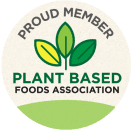Naturally Speaking -- Pathogen Report Card
The Centers for Disease Control and Prevention (CDC) recently released a recap of major food-borne illness outbreaks that have taken place over the past year. This included four Salmonella, two E. coli, one Listeria, and one Cyclospora outbreak. The CDC defines an outbreak to include more than one state that has been infected by the same strain of a food-borne pathogen. The Centers for Disease Control and Prevention (CDC) recently released a recap of major food-borne illness outbreaks that have taken place over the past year. This included four Salmonella, two E. coli, one Listeria, and one Cyclospora outbreak. The CDC defines an outbreak to include more than one state that has been infected by the same strain of a food-borne pathogen.
According to the CDC report these incidents only represent a few of the major nationwide outbreaks where individuals have been contaminated by the same pathogen strain. Moreover, it again raises renewed apprehension by consumers about products such as raw chicken, beef, cheese, and, new to the list this year, Chia Powder. It also represents a continuing source of concern among food manufacturers who will have to bear the brunt of any recall from a pathogen outbreak.
This year's CDC pathogen report card should come as no surprise. The federal government continually estimates over 75 million cases in the US of food-borne illnesses each year, which results in an estimated 300,000 hospitalizations and 5,000 deaths annually.
With more food products being produced and distributed each year, food safety throughout the shelf life of products is more and more critical. And, the effective control of bacterial growth becomes of paramount importance.
There are a number of methods to help combat pathogens. Among the most extremely effective means of combating pathogens such as Listeria and Salmonella -- the most common causes of food-borne illnesses -- is Lauric Arginate. Lauric Arginate, also known as Ethyl Lauroyl Arginate and Lauramide Ethyl Ester, is a derivate of Lauric Acid, L-Arginine and Ethanol, all naturally occurring substances.
At A&B Ingredients our Lauric Arginate-based antimicrobial is CytoGUARD LA. FDA approved, CytoGUARD LA is extremely effective in combating Listeria and Salmonella, as well as other pathogens, which can affect the food processing of meats, fresh or frozen seafood.. FDA approved, CytoGUARD LA is extremely effective in combating Listeria and Salmonella, as well as other pathogens, which can affect the food processing of meats, fresh or frozen seafood.
We know that for the most part, foodborne illnesses are the direct result of eating foods that are contaminated with bacteria, parasites, or viruses that occurs in food processing. CytoGUARD LA significantly reduces the bacterial levels by altering the cell membranes of the microbes, thus preventing their growth.
What makes CytoGUARD LA so effective in reducing pathogens is its low toxicity in conjunction with its antimicrobial properties. This makes it a valuable tool for the food processing industry with respect to improved safety and product quality. The antimicrobial properties of Lauric Arginate are derived from its action on the Cytoplasmic membranes of the microorganisms. CytoGUARD LA causes a disruption or instability of the plasma membrane lipid bilayer, altering the metabolic process and detaining the cellular cycle.
And, CytoGUARD LA is not affected by pH and has a wide spectrum of activity and functions on nearly all bacteria, such as Listeria, Salmonella, E. Coli, Campylobacter, yeast, molds and Lactobacillus.
Among the benefits of Lauric Arginate are:
- Broad spectrum of antimicrobial efficacy;
- High partition coefficient (>10), means the product concentrates in the water phase of products, where most bacterial action occurs;
- Activity over a wide pH range (3 to 7)
- Safe ingredient: LAE is hydrolyzed in the human body by chemical and metabolic pathways, which quickly break the molecule into its natural components;
- GRAS Status: Granted by a panel of FDA experts in the U.S. through scientific procedures set forth under 21 CFR §170.30(b)
- Stable in pH ranges 3-9
- Will not affect the appearance of food products
The active components in CytoGUARD LA have been proven a safe and effective alternative to conventional processing treatments. Full toxicology studies and research have been conducted and were found to be a non-toxic compound. The active compound in CytoGUARD LA is metabolized by the body very rapidly and broken down into its natural building block components.
The preferred method of application of CytoGUARD LA is through A&B Ingredients' SLIC™ (Spayed Lethality in Container) technology. SLIC is a patent-pending process designed to improve the safety of ready-to-eat (RTE) processed meat products against foodborne contaminants. But unlike its conventional rivals, SLIC is based on introducing an antimicrobial into the vacuum packaging of the food products before, or as the product is inserted, using the force of the vacuum to spread the antimicrobial purge.
How Can We Help?
We are here to help you with development of new and improved food products. Our technical service and sales teams can assist you in choosing the right ingredients best suited for your applications.
Product CatalogContact Us
